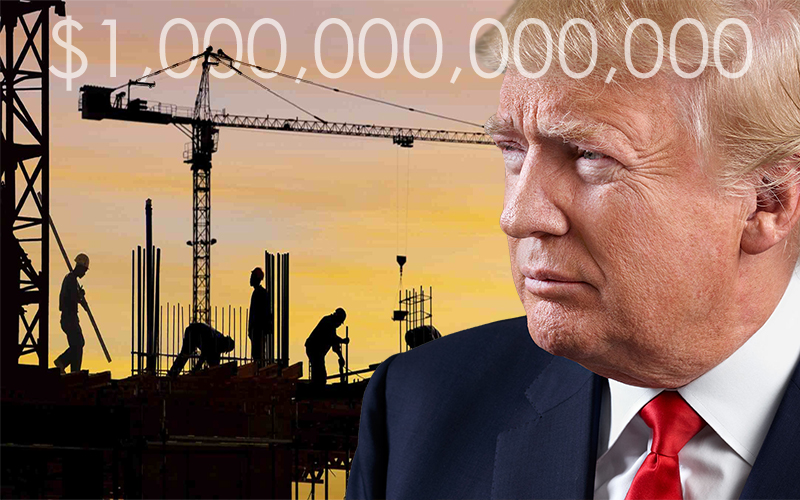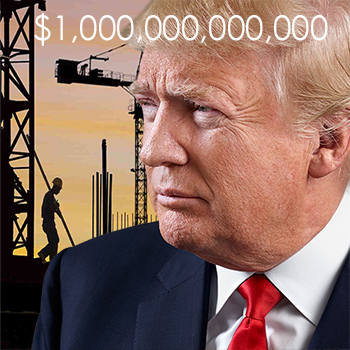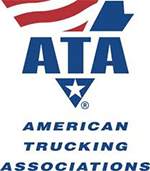Trump’s $1T Infrastructure Plan Still ‘Up in the Air’

Over 10 years, President Trump has promised to generate $1 trillion in infrastructure spending, and with two of his other top campaign pledges in trouble, infrastructure appeared to be an area ripe for bipartisan compromise, so we thought!
The on-again, off-again, much-ballyooed $1 trillion infrastructure program promised by the fledgling Trump administration is on again. Sort of.
After failing on its longstanding promise to fix Obamacare before moving onto the very complicated task of tax reform, the administration has sent conflicting messages about infrastructure.
At first, it was a go immediately. Then it was relegated after tax reform, which meant 2018 - or maybe never.
Now, at this moment, it’s a go ahead. Perhaps as early as May. Or maybe not.
“We want to do a great infrastructure plan,” Trump told the New York Times. “I think it’s going to be one of the very bipartisan bills and it’s going to happen.”
Then, just as if he were dousing hopes of a simple infrastructure bill unencumbered with partisan politics, the mercurial president added: “I may put it in with health care.”
So much for simple.
At least, Trump is now vowing to cut red tape to speed up approval of infrastructure projects and said his overhaul could top $1 trillion on roads, tunnels and bridges, one of his many campaign promises.
His comments came at a White House meeting of 50 chief executives and other business leaders.
Transportation Secretary Elaine Chao said recently the administration plans to release a legislative package in May of this year.
Investors have become more skeptical that the plan would win approval this year in Congress, which is controlled by Republicans who are traditionally wary of big government spending programs such as this.
Chao also said that DOT “has a budget of $70 billion and we don’t build anything.” She was referring to the billions that DOT distributes Highway Trust Fund dollars through a formula that essentially acts as a block grant to states.
Chao now says “money is not the problem,” adding:
“There’s lots of money chasing too few deals. And so what we need to do is somehow work on the upstream part of rebuilding our infrastructure, and that is to let loose the permitting process so that deregulatory efforts can be ongoing.”
That process is slow.
Trump said building a highway can require dozens of approvals and take 10 to 20 years, a process he is promising to streamline.
Trump said he would not fund projects that cannot be started within 90 days.
Meanwhile, American Trucking Associations (ATA) is keeping the pressure on Capitol Hill.
FedEx Freight President and CEO Mike Ducker and Werner Enterprises President and CEO Derek Leathers both told the Senate Commerce, Science and Transportation Committee’s Subcommittee on Surface Transportation and Merchant Marine Infrastructure, Safety and Security, the U.S. must invest more in its roads and bridges so the trucking industry may continue to safely and efficiently move the nation’s goods.
“ATA and its members are continuing to tell our story on Capitol Hill and at the White House about need to improve our nation’s roads and bridges,” said ATA President and CEO Chris Spear.
“Our industry currently loses nearly $50 billion annually to congestion - that is unacceptable. We must unclog our arteries and highways and make our infrastructure safer and more efficient by investing in our roads and bridges.”
Read: ATA Members Call for Increased Infrastructure Investment
Meanwhile, states continue to act on their own to improve infrastructure in wake of the federal government’s inertia. California recently enacted a $52 billion highway improvement program.
It will be paid for by raising $5.2 billion a year for 10 years by increasing the vehicle registration fee by $25 to $175 depending on the value of the vehicle, raising gas and diesel taxes this year and creating a $100 annual fee on zero-emission vehicles beginning in 2020.
Related Article: Former Transportation Secretary Anthony Foxx Discusses President Trump’s Infrastructure Plan
Related “Infrastructure” Papers
American Infrastructure Improvements
Across the political spectrum, there is general agreement that America’s infrastructure needs significant improvement, and by some measures, our current national investment in infrastructure is at a seventy-year low, and this investment deficit is imposing serious costs on our economy and global competitiveness. Download Now!
A Blueprint to Rebuild America’s Infrastructure
The Senate Democrats’ “Blueprint to Rebuild America’s Infrastructure” would make a historic $1 trillion federal investment to modernize our crumbling infrastructure and create more than 15 million jobs that our economy desperately needs, by The Senate Democrats. Download Now!
Beyond Shovel-Ready: The Extent and Impact of U.S. Infrastructure Jobs
For decades, policymakers have called for more spending on America’s infrastructure to stimulate job growth, this report sheds new light on the widespread contributions that infrastructure jobs make to the nation’s economy, including their importance at the metropolitan level. Download Now!
The Case for Investing in America’s Transportation Infrastructure
This report outlines the economic cost of neglecting America’s transportation infrastructure and the positive effects of reinvesting in it for the 21st Century, and contrasts America’s current investment with 20th Century levels and guides policymakers forward in efforts to rebuild this vital economic foundation. Download Now!
Article Topics
American Trucking Associations News & Resources
Trucking industry balks at new Biden administration rule on electric trucks: ‘Entirely unachievable’ Groups warn of $1 trillion cost for electrification of America’s trucking industry New coalition is focused on fighting new Labor Department independent contractor rule ATA data points to truck tonnage declines to start 2023 December Truck tonnage ends 2023 with a modest gain, reports ATA ATA warns of ‘tangled mess’ due to latest Labor Department independent contractor ruling November truck tonnage is down, reports ATA More American Trucking AssociationsLatest in Business
Ranking the Top 20 Women in Supply Chain Microsoft Unveils New AI Innovations For Warehouses Let’s Spend Five Minutes Talking About ... Malaysia TIm Cook Says Apple Plans to Increase Investments in Vietnam Amazon Logistics’ Growth Shakes Up Shipping Industry in 2023 Spotlight Startup: Cart.com is Reimagining Logistics Walmart and Swisslog Expand Partnership with New Texas Facility More Business




















